| News Archive |

|
2008: Jan Feb Mar Apr May Jun Jul Aug Sep Oct Nov Dec
2007: Jan Feb Mar Apr May Jun Jul Aug Sep Oct Nov Dec
2006: Jan Feb Mar Apr May Jun Jul Aug Sep Oct Nov Dec
2005: Jan Feb Mar Apr May Jun Jul Aug Sep Oct Nov Dec
2004: Jan Feb Mar Apr May Jun Jul Aug Sep Oct Nov Dec

News: November 2008
Back to latest news

|
| |
New simulation gives Jupiter double-sized core
New computer simulations, conducted at the scale of individual atoms, say Jupiter has a rocky core surrounded by ice that is more than twice as large as previously thought.
 FULL STORY FULL STORY |
 |
 |
 |
Buried ice found at low latitudes on Mars
NASA's Mars Reconnaissance Orbiter has revealed vast Martian glaciers of water ice buried under protective blankets of rocky debris at much lower latitudes than any ice previously identified on the Red Planet.
 FULL STORY FULL STORY |
 |
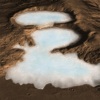 |
 |
A localised cosmic ray influx
Research conducted at the Milagro observatory has uncovered two nearby regions in space that exhibit unusually high readings of cosmic rays.
 FULL STORY FULL STORY |
 |
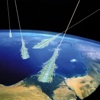 |
 |
More evidence for water reservoir at Enceladus
Scientists have found more evidence to suggest that the geyser like plumes spewing out from Saturn’s icy moon Enceladus may be sourced from a warm liquid ocean buried deep within the moon.
 FULL STORY FULL STORY |
 |
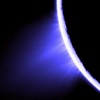 |
 |
Milky Way’s mammoth stars resolved by Hubble
Two of our Galaxy's most massive stars have been scrutinised by the Hubble Space Telescope to reveal a third component of the system.
 FULL STORY FULL STORY |
 |
 |
 |
Nature of ‘Hanny's Voorwerp’ revealed
Radio observations of a curious feature brought to the attention of astronomers by Dutch Galaxy Zoo volunteer Hanny van Arkel have finally revealed the nature of the object that came to be known as Hanny’s Voorwerp.
 FULL STORY FULL STORY |
 |
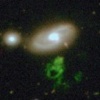 |
 |
Galaxy evolution: nature
or nurture?
UK astronomers working on data from two separate projects - Galaxy Zoo and the Space Telescope A901/902 Galaxy Evolution Survey (STAGES) - have both uncovered a type of galaxy that represents a missing link in galaxy evolution.
 FULL STORY FULL STORY |
 |
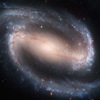 |
 |
Chandrayaan-1 Moon probe a big hit
India’s first mission to the Moon, Chandrayaan-1, has begun making science observations and successfully deployed its Moon Impact Probe at the lunar south pole.
 FULL STORY FULL STORY |
 |
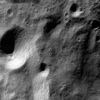 |
 |
Tom Pike interview
Dr Tom Pike talks about his involvement with the Phoenix mission and the future of Mars exploration.
 FULL STORY FULL STORY |
 |
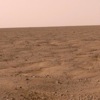 |
 |
First map of Mars’ aurorae
Scientists using ESA's Mars Express have produced the first crude map of aurorae on Mars.
 FULL STORY FULL STORY |
 |
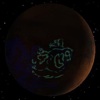 |
 |
Beta Pictoris planet finally imaged?
Inside the debris disc of Beta Pictoris lies a newly discovered object. If confirmed as a gas giant, it will be the first image of a planet that is as close to its host star as Saturn is to the Sun.
 FULL STORY FULL STORY |
 |
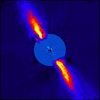 |
 |
Hubble solves mystery of lone starburst galaxy
Astronomers have solved the mystery as to why a small, nearby, isolated galaxy is pumping out new stars faster than any galaxy in our local neighborhood. It turns out it is actually further away than astronomers first thought.
 FULL STORY FULL STORY |
 |
 |
 |
Mysterious source of high energy cosmic rays
The NASA-funded Advanced Thin Ionization Calorimeter (ATIC) balloon instrument has discovered a previously unidentified nearby source of high energy cosmic rays.
 FULL STORY FULL STORY |
 |
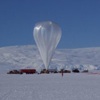 |
 |
Planet found orbiting dangerously close to
red giant
A new planet found orbiting a red giant star at a distance of just 0.6 AU may shed new light on how aging stars influence nearby planets before they are consumed.
 FULL STORY FULL STORY |
 |
 |
 |
Site selection narrows for next Mars lander
Four potential landing sites on Mars have been selected as candidates for the touch-down of NASA’s next roving Mars mission, the Mars Science Laboratory.
 FULL STORY FULL STORY |
 |
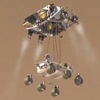 |
 |
Synchronised observations catch flares from
Sagittarius A*
Simultaneous observations made with the VLT and APEX telescopes have revealed the nature of four violent flares emanating from the centre of our Milky Way Galaxy.
 FULL STORY FULL STORY |
 |
 |
 |
1000 telescopes for schools
In an ambitious project led by the Society for Popular Astronomy (SPA), the Science Facilities and Technology Council (STFC) and the Royal Astronomical Society (RAS), 1000 telescopes will be donated to secondary schools in the UK to inspire the next generation of astronomers throughout the International Year of Astronomy.
 FULL STORY FULL STORY |
 |
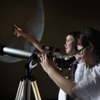 |
 |
Scientists dive deeper into Mars’ watery past
An international team of scientists working with data gleaned from Mars Odyssey’s Gamma Ray Spectrometer report new evidence for the controversial idea that oceans once covered as much as one-third of ancient Mars.
 FULL STORY FULL STORY |
 |
 |
 |
XMM and Integral unveil magnetar environment
X-ray and gamma ray data from ESA's XMM-Newton and Integral orbiting observatories have been used to make the first tests of the physical processes that define magnetars, an unusual class of neutron star with immense magnetic fields.
 FULL STORY FULL STORY |
 |
 |
 |
Planet family photographed around normal star
Astronomers using the Gemini North telescope and W.M. Keck Observatory on Hawaii's Mauna Kea have obtained the first images of a multi-planet system around a normal star.
 FULL STORY FULL STORY |
 |
 |
 |
Hubble images exoplanet
Using the Hubble Space Telescope, a team of astronomers has taken an image of a planet around the star Fomalhaut. It is the first such image of an exoplanet taken in visible wavelengths.
 FULL STORY FULL STORY |
 |
 |
 |
Richard Garriott interview
Richard Garriott, a significant figure in the video game industry, recently established himself as a self-funded space tourist, spending ten days onboard the International Space Station. We spoke to Garriott about the highs and lows of his space station experiences and his thoughts on the future of space tourism.
 FULL STORY FULL STORY |
 |
 |
 |
Mysterious new aurora
on Saturn
An infrared camera on the Cassini spacecraft has detected a unique aurora at Saturn’s north polar cap, unlike any other known in the Solar System.
 FULL STORY FULL STORY |
 |
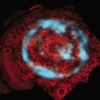 |
 |
Dusty shock waves generate planet ingredients
Using NASA’s Spitzer Space Telescope, astronomers have shown that shock waves around dusty young stars could be generating the raw materials needed for planet formation.
 FULL STORY FULL STORY |
 |
 |
 |
Sub-millimetre astronomy reveals glowing
stellar nurseries
By using sub-millimetre wavelength astronomy, astronomers have revealed the cold dense clouds of material that are the birth places of new stars.
 FULL STORY FULL STORY |
 |
 |
 |
Phoenix concludes Martian adventure
After more than five months on the Martian surface, NASA’s Phoenix Mars Lander has said its farewells to the Earth as the decline in solar power forces the spacecraft to shut down.
 FULL STORY FULL STORY |
 |
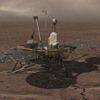 |
 |
Early career planetary scientists explore Mars
Martian meteorites, surface process and the habitability of the red planet formed a key part of discussions at the UK Planetary Forum’s 6th Early Careers Planetary Scientists’ meeting held in London last week.
 FULL STORY FULL STORY |
 |
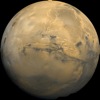 |
 |
ESO produces deepest UV image of the Universe
A new image from the European Southern Observatory (ESO) offers the deepest ground-based ultraviolet image of the Universe ever obtained.
 FULL STORY FULL STORY |
 |
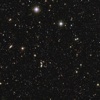 |
 |
Fingers and loops revealed in the Crab Nebula
The Chandra X-ray Observatory has captured the first clear view of the faint boundary of the Crab Nebula’s X-ray emitting pulsar wind nebula.
 FULL STORY FULL STORY |
 |
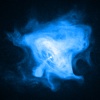 |
 |
Meteorites’ magnetism holds clues to planet birth
Magnetic records frozen into the cores of ancient meteorites have provided fresh insight into the planetary forming conditions at the beginning of the Solar System.
 FULL STORY FULL STORY |
 |
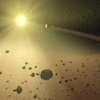 |
 |
JCMT sees the dark hearts of bright galaxies
European astronomers using the James Clark Maxwell Telescope (JCMT) have gained important information on what are known as Ultraluminous Infrared Galaxies (ULIRGs), galaxies with a huge energy output but which are obscured by their massive dust and gas clouds.
 FULL STORY FULL STORY |
 |
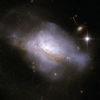 |
 |
 |
| |
 |

Back to latest news |
 |

